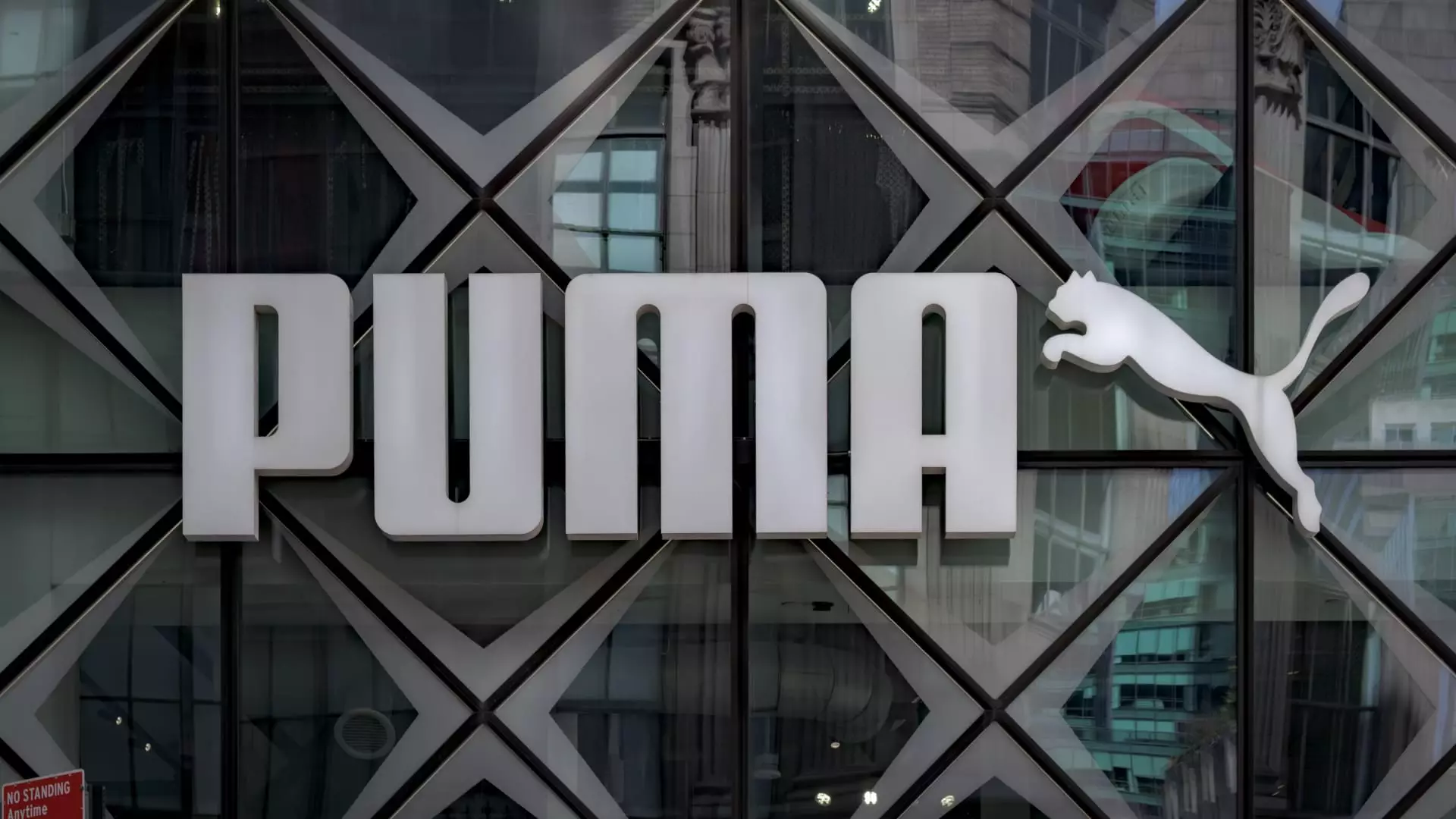Puma’s recent plunge, with shares dropping up to 18%, reveals far more than just disappointing sales figures. It underscores the fragile veneer of resilience that many global brands cling to amid a landscape riddled with geopolitical turbulence and economic uncertainty. While Puma publicly admits to internal shortcomings and external headwinds, the reality is arguably more ominous: a brand lost in its own strategic confusion, struggling to find footing in a rapidly shifting marketplace that demands adaptability, not complacency. For a company that once thrived by blending innovation with youthful vigor, the current trajectory suggests a deeper identity crisis — a reflection of how poorly leadership anticipates and responds to the tectonic shifts shaping the retail world today.
Strategic Missteps and the Mirage of External Factors
The company’s acknowledgment that “U.S. tariffs,” “muted brand momentum,” and “inventory concerns” are major culprits is truthful but also symptomatic of broader misjudgments. Rather than proactively innovating or pivoting toward more sustainable strategies, Puma appears increasingly reactive, attempting to mitigate damage through short-term price hikes and inventory dumps. Such tactics often exacerbate problems: raising prices amid declining consumer confidence only alienates loyal customers, while frontloading shipments just swells inventories that threaten to become a permanent burden. It’s a classic case of managing symptoms rather than confronting underlying issues — a psychological crutch for leadership that, frankly, reveals a lack of visions for meaningful renewal.
The Broader Implications of Internal Failures
What’s truly troubling is the CEO’s candid admission that “we need to take a hard look at ourselves.” While such honesty might seem refreshing, it also highlights a leadership void — a failure to anticipate market dynamics or innovate preemptively. Puma’s struggles aren’t solely external; they are deeply rooted in internal complacency. The brand’s product offerings, once celebrated for their freshness, now seem dated, as if the company has become too comfortable resting on past laurels. The industry demands relentless reinvention, yet Puma’s internal review appears to be a defensive move rather than a bold recalibration, leaving stakeholders questioning whether the company can navigate the storm rather than simply weather it.
The Unfolding Economic Reality and Its Discontents
The impact of rising U.S. tariffs, alongside the company’s own inventory mismanagement, showcases how macroeconomic policies and corporate strategy are intertwined in a destructive dance. Instead of leveraging their global supply chain advantages, Puma is forced into a defensive stance, raising prices and reducing imports, which could further depress sales. This cycle highlights a critical flaw: dependence on external policy environments beyond their control has rendered Puma vulnerable to geopolitical whims, exposing the fragility of their operational策略. Such reliance on external factors to sustain growth is a perilous game that leaves the company increasingly exposed, especially in a market where consumer loyalty is fragile and competition is fierce.
The Danger of Complacency in the Face of Competition
In the hyper-competitive sportswear landscape, brands like Nike and Adidas are not just holding ground but aggressively expanding their dominance, often outpacing Puma thanks to more aggressive innovation and better consumer engagement. Puma’s hesitant approach, exemplified by their reluctance to hike prices in the U.S. market, signals a lack of confidence and clear strategic direction. The danger lies in remaining passive — assuming that market changes will bypass them or that external shocks are temporary. Yet history repeatedly demonstrates that brands unwilling to adapt quickly are doomed to obsolescence, lingering in the shadows of their more agile competitors. If Puma doesn’t fundamentally rethink its approach, it risks slipping further into irrelevance, no matter how iconic it once was.
The Fragile Future of Puma: A Company on the Brink
Looking ahead, the company’s forecast of operating losses and further sales declines signals a perilous road ahead. The challenge is not merely external pressures but a broader existential question about Puma’s identity. Can a brand that once thrived by capturing youthful energy and trend-driven relevance reinvent itself amid economic and geopolitical upheaval? The answer depends on whether leadership recognizes that superficial fixes—such as partial price hikes and inventory adjustments—are insufficient. They must embrace bold, transformative strategies rooted in innovation, consumer trust, and a willingness to accept internal accountability. Failing that, Puma risks becoming a cautionary tale of a legacy brand brought low not by external factors alone, but by its own inability to adapt and evolve in an ever-changing world.

